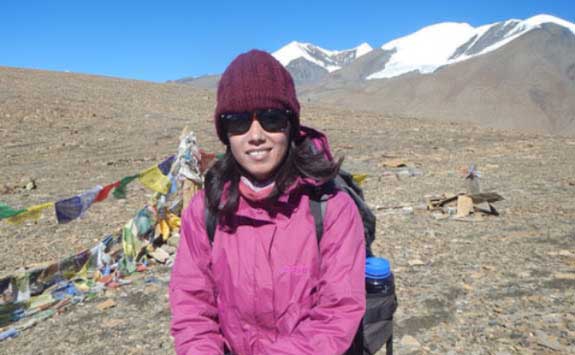Gunjan Silwal
Gunjan's PhD project title is 'Quantifying the controls on, influences and glaciological impacts of glacier disconnections on ice masses in the Himalaya' Read more about Gunjan's research.
About Gunjan
Research clusters
Project description
Himalayan glaciers are thinning and receding rapidly in response to the ongoing climate change.
The topography can further drive the non-linear response of these glaciers to climate change, leading to a heterogenous thinning and recession across the region. However, the alarming rate of thinning and recession in recent decades has caused disconnections between the accumulation and ablation area in many Himalayan glaciers.
This trend is expected to continue as glaciers will downwaste and fragment more given the current warming rates. Complete disconnection between glacier’s accumulation and ablation areas can lead to stagnation of glacier tongue, with reduced surface velocity, increased debris cover and accelerated recession.
The controls on and influence of disconnections on ice masses and ice flow dynamics are understudied in the Himalaya, and this hampers our ability to reliably predict future glacier behaviour in the region.
Reliable predictions are crucial for assessing future melt water availability, sustainable water resource management and preparedness towards increasing cryospheric hazards in the region.
The main aims of my project are to:
- quantify the climatic, glaciological, and topographic controls on glacier disconnections,
- study the physical impacts of disconnections on glacier ice mass and ice flow dynamics
- quantify how widespread the issue of glacier disconnections is in the Himalayas using a combination of remote sensing methods, numerical modelling of glaciers and field-based studies.
Publications
- Silwal, G., Pradhan, A.M.S. 2022. Projected time series of glacier area and volume evolution from 2020-2100 in Karnali River Basin. WRRDC Research Letter, Issue no: 19, April 2022, pp. 1-2.
- Silwal, G., Pradhan A.M.S. 2022. Elevation dependent warming and dynamics of snow cover area in Karnali River basin (2003-2019), WRRDC Research Letter, Issue no: 16, January 2022, pp. 1-2.
- Stumm, D., Joshi, S. P., Gurung, T. R., and Silwal, G.: Mass balances of Yala and Rikha Samba Glacier, Nepal from 2000 to 2017, Earth Syst. Sci. Data, 13, 3791–3818, 2021. https://doi.org/10.5194/essd-
13-3791-2021 - Silwal, G., Kayastha, R. B., Mool, P. K., 2016. Application of Temperature Index Model for Estimating Daily Discharge of Sangda River Basin, Mustang, Nepal, Journal of Climate Change, vol. 2, no. 1, pp. 15-26. DOI: 10.3233/JCC-160002
Teaching
GEO2137: Key Methods for Physical Geographers
GEO2226: Glacial Environments
GEO2043: Key Methods for Human Geographers
GEO2136: Global Environmental Change

